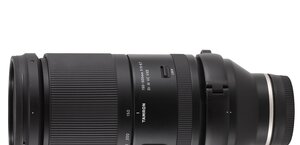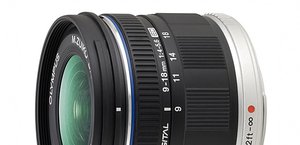Tamron SP 45 mm f/1.8 Di VC USD
3. Build quality and image stabilization
The age of quite new 50 mm instruments started in the second decade of the 21st century with launches of such lenses as the Zeiss Otus 1.4/55, the Sigma A 1.4/50, the Nikkor 1.4/58 or the Tamron, presented in this test. Sigma and Zeiss used as many as 12-13 optical elements so two times as many as in older constructions. Tamron decided not to complicate their design so much. On the one hand it is completely understandable because the lens comes with a maximum aperture of f/1.8, not f/1.4. On the other hand, though, it also features an image stabilization unit and its presence always complicates the optics. As a result when it comes to basic parameters the Tamron could be placed somewhere between old 1.8/50 models and new 50 mm instruments as fast as f/1.4. Still there is one category where the Tamron fares much better than its rivals – the minimum focusing distance, which amounts to just 0.29 of a meter.
The photo below shows how the physical dimensions of the new constructions increased when compared to the old ones. The old Nikkor AF 50 mm f/1.8D looks like a miniature next to the tested Tamron which is anyway smaller than the Otus or the new Sigma. What’s more, even the faster Canon EF 50 mm f/1.4 USM is distinctly smaller than the Tamron.
Please Support UsIf you enjoy our reviews and articles, and you want us to continue our work please, support our website by donating through PayPal. The funds are going to be used for paying our editorial team, renting servers, and equipping our testing studio; only that way we will be able to continue providing you interesting content for free. |
- - - - - - - - - - - - - - - - - - - - - - - - - - - - - - - - - - - - - - - - - - - - - - - -
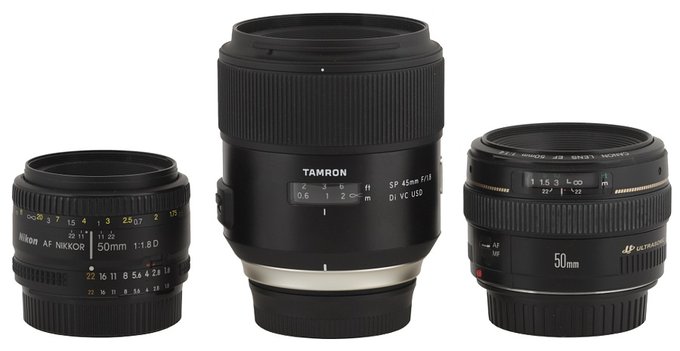 |
The tested lens starts with a metal mount which surrounds the contacts and a rear element, 31 mm in diameter. That element is positioned on the same level as the contacts at infinity. When you pass to the minimum focusing distance it hides inside the casing almost 2 cm deep, revealing a nicely darkened and matted inner tube, covered by ribs. Still you can notice a quite wide slit near the very edge of the element and through that slit you can perceive a not exactly so nicely darkened part of the casing and some electronic components as well.
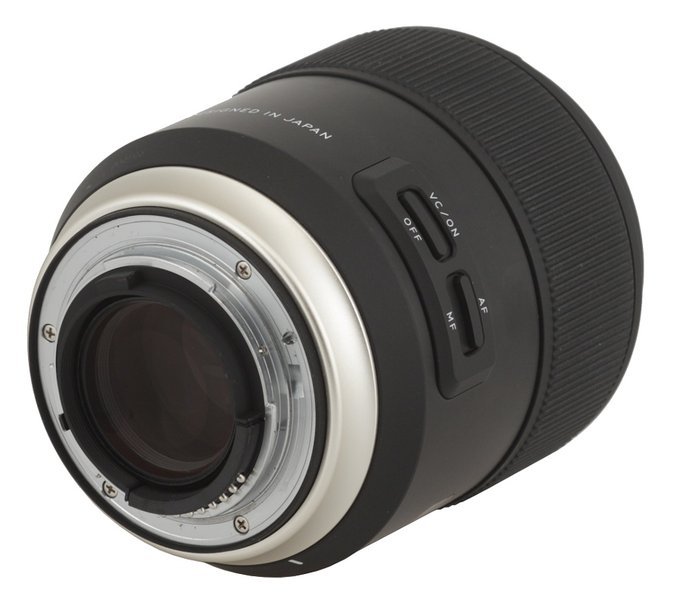 |
A rubber gasket joined with a silver, immobile ring made of metal is the first part of the proper casing. That ring turns into a smooth, black body of the lens with a white mark making the alignment with a camera easier. Above that mark you see a distance scale behind a window, expressed in feet and meters. Looking from above, on the right of the window you can find the name and the parameters of the lens along with a silver ‘SP’ badge. On the left side there is a focusing mechanism mode switch (AF/MF) and a stabilization switch (VC ON/OFF). Further on there is a piece of information that the lens was not only designed but also made in Japan.
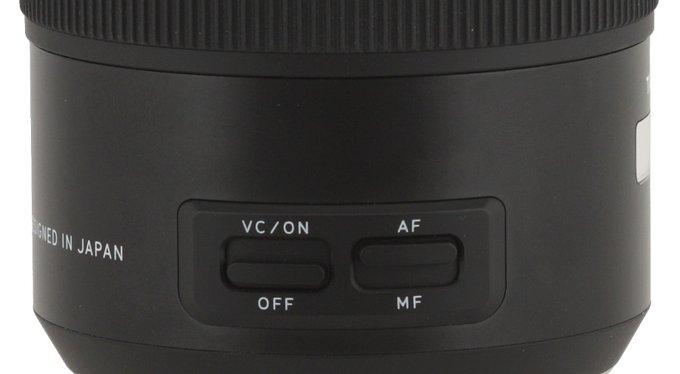 |
The focusing ring constitutes the next part of the lens; it is 28 mm wide and completely covered by ridged, rubberized armour. It works evenly and is properly damped. Running through the whole distance scale needs a turn through an angle of 190 degrees. It is a significant value, allowing you very precise manual settings.
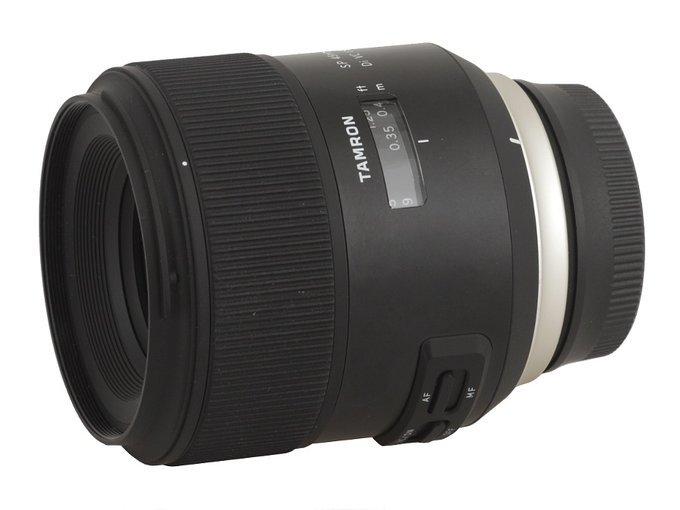 |
Behind the focus ring you also find a hood mount with a non-rotating thread inside so you can attach filters with a diameter of 67 mm.
The front element is over 4 cm in diameter and it is a bit hidden inside the black, ribbed tube. Contrary to the Tamron 1.8/35 it doesn’t move.
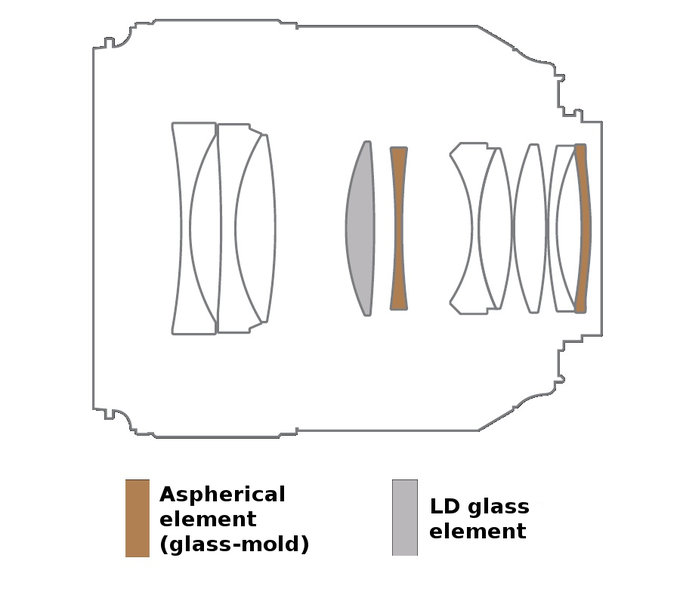 |
The elements are covered by special coatings: eBAND (Extended Bandwidth & Angular-Dependency ) and BBAR (Broad-Band Anti-Reflection) which are supposed to guarantee a high level of transmission and a good performance against bright light without any ghosting or flare. Additionally the outer lenses feature fluorine hydrophobic coatings to repel water, fingerprints and smudges.
Buyers get both caps and a hood in the box. It is a pity the producer didn’t decide to add a pouch or a case. Sigma offers a hard case with similar pieces of equipment; even buying the cheap Nikkor AF-S 50 mm f/1.8G you get a soft pouch.
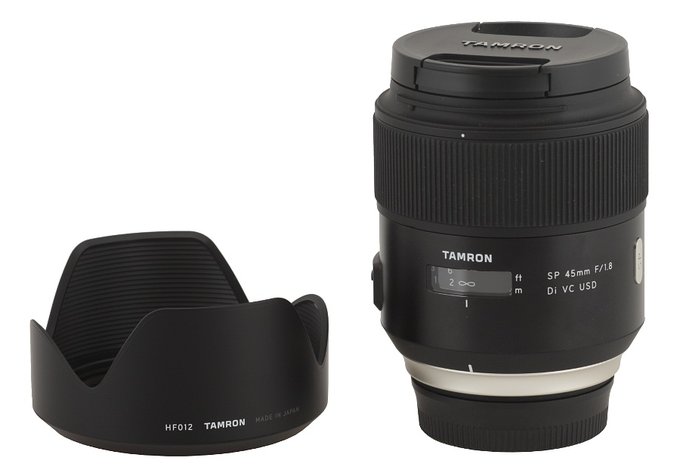 |
The new line of lenses was also given new, stylish boxes with toned-down colours.
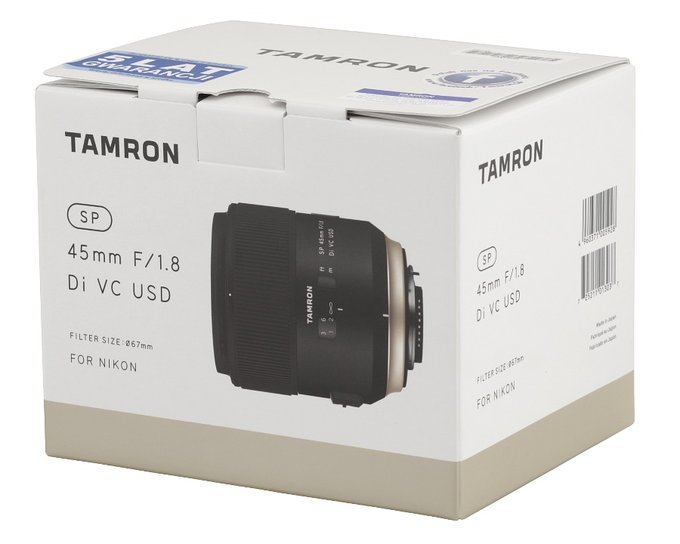 |
Optical stabilization
The Tamron 1.8/45 features a built-in Vibration Compensation system and its declared efficiency is supposed to amount to 3.5 EV. Of course we didn’t hesitate to check that claim. In order to do so we took several dozen of shots with exposure times ranging from 1/50 to 1/2 of a second with the stabilization switched on and off. Then we determined the percentage of blurred photos at every shutter speed and presented it as a function of that speed, expressed in EV (with 0 EV being an equivalent of 1/40 of a second). The graph below shows our results.
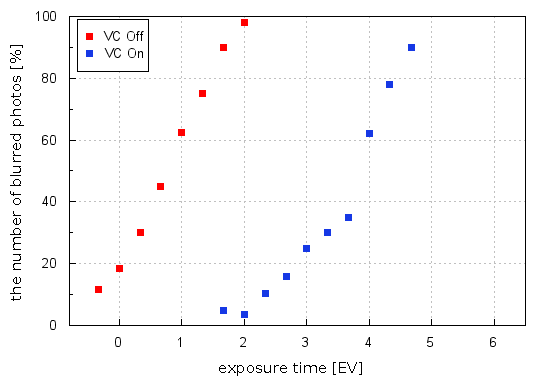
The maximum distance between both curves reaches a bit above 3 EV and such is, according to our test, the efficiency of the stabilization mechanism. As it is very close to the value declared by the producer the performance of the stabilization system of the tested lens should be assessed positively.




